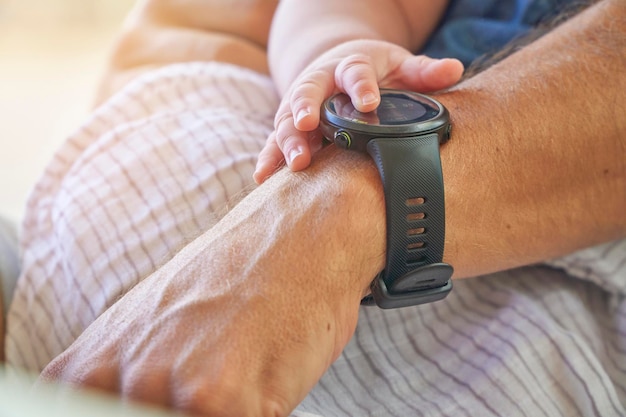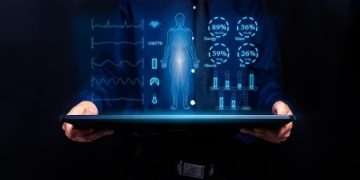The Future of Home Healthcare: Remote Monitoring and Personalized Treatment in the US

The Future of Home Healthcare: Remote Monitoring and Personalized Treatment is revolutionizing patient care by leveraging technology for continuous health monitoring and tailored treatment plans, ultimately improving health outcomes and reducing hospital readmissions.
The landscape of healthcare is rapidly evolving, and at the forefront of this transformation is the future of home healthcare: remote monitoring and personalized treatment. Technology and patient-centric approaches are converging to deliver more effective and convenient care within the comfort of one’s home.
The Evolving Landscape of Home Healthcare
Home healthcare is no longer limited to basic assistance. It’s becoming a sophisticated, tech-driven ecosystem focused on proactive, personalized care, which includes using technology to monitor patients remotely to anticipate and address health issues before they escalate.
Shift Towards Patient-Centric Care
The focus is increasingly on empowering patients to manage their health. This shift emphasizes individual needs and preferences, creating more effective and satisfying healthcare experiences, so the evolution includes the development of tools and strategies that allow for personalized treatment plans, tailored to the unique circumstances of each person.
Technological Advancements Driving Change
Innovations like wearable sensors, telehealth platforms, and AI-powered analytics are key. This technological surge enables real-time monitoring, data-driven insights, and seamless communication between patients and healthcare providers. These advancements promise to make a significant difference in the quality and accessibility of home healthcare.
- Remote Monitoring Devices: Continuous tracking of vital signs and activity levels.
- Telehealth Platforms: Virtual consultations and remote support.
- AI-Powered Analytics: Predictive insights for proactive intervention.
In conclusion, the transformation of home healthcare rests on its evolution toward patient-centric models and the groundbreaking impact of technological inventions, guaranteeing a trajectory of care that is both more effective and more personalized.

Remote Monitoring Technologies: A New Era of Vigilance
Remote monitoring technologies (RMTs) are transforming how healthcare is delivered. By continuously tracking vital signs and other health metrics, RMTs are providing invaluable data that enables proactive intervention, and facilitate the early detection of potential health issues, allowing healthcare providers to intervene preventatively.
Benefits of Continuous Health Tracking
Continuous monitoring provides a comprehensive view of a patient’s health, allowing healthcare providers to detect subtle changes that might indicate a developing problem. Also is possible to track patterns and trends, which enable more informed decisions and better outcomes.
Types of Remote Monitoring Devices
From wearable sensors that track heart rate and activity levels to sophisticated devices that monitor blood glucose and respiratory function, the range of RMTs is vast and expanding, becoming an integral part of home healthcare by providing real-time data on patients.
- Wearable Sensors: Track activity, sleep, and vital signs.
- Smart Pillboxes: Monitor medication adherence.
- Connected Scales: Track weight and fluid retention.
In sum, continuous tracking, paired with a range of remote monitoring devices, defines a system of constant observation that significantly improves the quality and efficacy of home healthcare.
Personalized Treatment Plans: Tailoring Care to Individual Needs
Personalized treatment plans are the future of effective healthcare. Recognizing that each patient is unique, these plans are designed to address the specific needs and circumstances of individuals. This approach can optimize treatment outcomes and enhances patient satisfaction.
The Role of Data Analytics and AI
Data analytics and artificial intelligence (AI) are playing a crucial role to create personalized treatment plans by processing vast amounts of patient data to identify patterns and predict outcomes. These technologies enable healthcare providers to make more informed decisions, leading to more effective treatments.
Customizing Medication and Therapy
Personalized treatment extends to customizing medication dosages and therapy regimens based on individual patient characteristics. This approach minimizes side effects and maximizes therapeutic benefits, ensuring that patients receive the most appropriate care tailored to their particular health profiles.

- Genetic Testing: Tailoring treatments based on genetic makeup.
- Lifestyle Integration: Incorporating personal preferences and daily routines.
- Adaptive Therapies: Adjusting treatment plans based on ongoing feedback.
In essence, tailored treatment plans represent a transition toward healthcare that is customized, precise and proactive, utilizing data and AI to boost medical results.
The Impact on Chronic Disease Management
Remote monitoring and personalized treatment are having a profound impact on chronic disease management. Conditions like diabetes, heart failure, and COPD are now being managed more effectively, which reduces hospital readmissions, improve overall quality of life, and give patients much needed control over their health.
Improved Outcomes for Diabetes Patients
Continuous glucose monitoring and personalized insulin delivery systems transform diabetes care, offering better control of blood sugar levels and reducing the risk of complications. These also empower patients to take a more active role in the management of their condition.
Reducing Hospital Readmissions for Heart Failure Patients
Remote monitoring of vital signs and fluid levels can help identify early signs of heart failure exacerbations. Early intervention can prevent hospital readmissions and improve patient outcomes, enhancing the stability and reliability of care.
- Proactive Intervention: Addressing issues before they escalate.
- Enhanced Patient Engagement: Empowering patients to take control of their health.
- Data-Driven Decision Making: Optimizing treatment plans based on real-time data.
Conclusively, the impact on chronic disease management, is revolutionizing patient care, which reduces hospital readmissions and empowers patients to manage their conditions actively.
Overcoming Challenges and Ensuring Data Security
While the future of home healthcare is promising, there are challenges to address. Ensuring data security, protecting patient privacy, and integrating new technologies into existing healthcare systems are critical considerations, but with careful planning and robust safeguards, these obstacles can be overcome.
Addressing Data Security and Privacy Concerns
Implementing strong encryption, adhering to HIPAA regulations, and ensuring transparency about data usage are essential for protecting patient privacy. Maintaining patient trust is paramount when implementing these new technologies.
Integrating New Technologies into Existing Systems
Seamless integration of new technologies into existing healthcare systems is crucial for widespread adoption. Interoperability standards and training programs for healthcare professionals are key steps, where efficiency and trust can reinforce system-wide improvement.
- Robust Encryption: Protecting sensitive patient data.
- HIPAA Compliance: Adhering to privacy regulations.
- Interoperability Standards: Ensuring seamless data exchange.
In closing, addressing these challenges requires a proactive approach to data security and the careful placement of new technologies into the current systems that guarantee privacy and system-wide improvements.
The Future of Home Healthcare: A Vision for 2025 and Beyond
Looking ahead to 2025 and beyond, the future of home healthcare: remote monitoring and personalized treatment is poised for significant growth. Innovations in AI, machine learning, and sensor technology will further enhance the capabilities of remote monitoring and personalized treatment, and will create even greater advances in healthcare management.
Emerging Technologies and Innovations
Advances in AI, machine learning, and sensor technology will enable more sophisticated and personalized healthcare. The integration of these technologies will empower healthcare providers to deliver more precise and effective care, giving way to greater innovation.
Expanding Access to Care
Home healthcare will become more accessible, particularly for underserved populations and those in rural areas. Telehealth and remote monitoring can overcome geographical barriers and ensure that everyone has access to the care they need, so these advances will democratize access and create improved equality in our healthcare.
- AI-Driven Insights: Predictive analytics for proactive care.
- Virtual Reality: Immersive therapy and rehabilitation.
- Nanotechnology: Advanced diagnostics and drug delivery.
In summary, the expansion of access to treatment, emerging technology, and the rise of AI point to a bright future for healthcare and treatment, which will democratize access to healthcare regardless of location or situation.
| Key Point | Brief Description |
|---|---|
| 📈 Remote Monitoring | Continuous tracking of patient health metrics at home. |
| 🩺 Personalized Treatment | Tailoring healthcare plans based on individual patient needs. |
| 🛡️ Data Security | Ensuring patient data is protected and privacy is maintained. |
| 🤖 AI Integration | Using AI and machine learning for proactive care. |
Frequently Asked Questions
▼
Remote monitoring involves using devices to track a patient’s health metrics outside of a traditional clinical setting. Wearable sensors and telehealth platforms send vital data to healthcare providers for continuous assessment.
▼
Personalized treatment plans are tailored to individual patient needs. Data analytics and AI help providers customize medication, therapy, and lifestyle interventions to optimize health outcomes.
▼
Benefits include improved health outcomes, reduced hospital readmissions, enhanced patient engagement, and greater access to care. Early detection and proactive intervention are also key advantages.
▼
Patient data is secured through robust encryption and adherence to HIPAA regulations. Transparency about data usage and strong cybersecurity measures are crucial for protecting patient privacy.
▼
Technology plays a pivotal role by enabling remote monitoring, personalized treatment, and greater access to care. Innovations in AI, machine learning, and telehealth will further enhance home healthcare capabilities.
Conclusion
The future of home healthcare: remote monitoring and personalized treatment represents a significant step forward in patient care. By leveraging technology to provide continuous monitoring and tailored treatment plans, healthcare providers can improve health outcomes, reduce costs, and enhance the overall quality of life for their patients.





